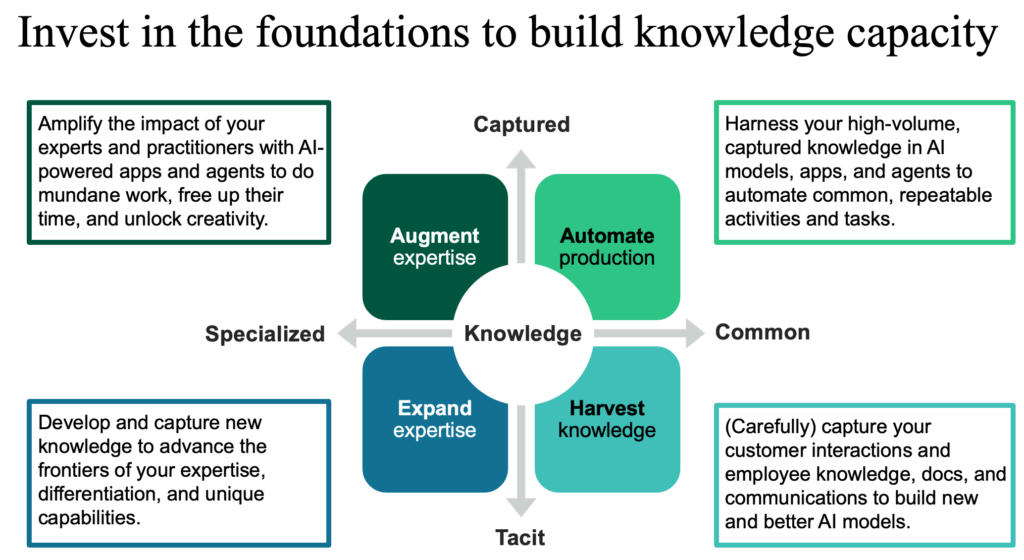How Do You Create AI Advantage?
AI advantage does not come simply by giving employees access to ChatGPT or Microsoft 365 Copilot. These general-purpose models and tools, trained mainly on the world’s public data, cannot differentiate your business or define your long-term success. Nor can buying off-the-shelf AI-accelerated products like Github Copilot or Tabnine to, for example, automate your coding. Our latest report, Turn Your Proprietary Knowledge Into AI Advantage (client-only access) suggests that the only path to sustainable business advantage lies in capturing and putting your organization’s unique and proprietary knowledge, expertise, and capabilities to work through AI models, apps, and agents. This is the essence of competition in the age of AI computing.
After developing core concepts of AI computing in our report Change The Interface; Change The World, my colleague Brian Hopkins and I investigated one of the building blocks of AI computing success: your knowledge capacity.
Before the advent of generative AI models, the motivation to capture, link, and harness all the knowledge in your files, databases, knowledge systems, and in people’s heads was anemic, the effort daunting, and the return on investment doubtful. AI computing changes that calculus, making it both possible and critical for organizations to rethink their approach to putting all their knowledge — data, information, and expertise — to work. Start by developing your knowledge assets and taking advantage of the symbiotic and collaborative nature of people empowered by AI systems. It’s your only winning move.
Develop Your Knowledge Capacity
To harness AI effectively, organizations must build their knowledge capacity — the ability to deploy proprietary knowledge through AI-powered tools, systems, and workflows. This involves capturing tacit knowledge trapped in file systems, informal processes, and human expertise, as well as optimizing existing knowledge stored in databases, documents, and other digital assets. As seen in the figure below, we have identified four investment strategies to prioritize how you can put knowledge to work. Each scenario requires a different investment strategy and carries different payoffs, risks, and resource requirements.
- In the two scenarios with captured knowledge, you are assembling existing knowledge assets into knowledge graphs and using them to build and deploy proprietary AI models and tools. The goal for these scenarios is automating routine work or production processes using more common knowledge and empowering experts and practitioners requiring more specialized knowledge.
- In the two scenarios with tacit knowledge, you are investing to harvest uncaptured knowledge from employees (i.e., you are discovering and preparing new knowledge assets) or to expand the frontiers of your knowledge from research, development, products, experiences, engagement, innovation, new ventures, and new ways of working.
Develop your firm’s knowledge capacity by inventorying your knowledge assets; make sure that you have a plan to build proprietary advantage with the knowledge you’ve captured, and begin the process of capturing tacit knowledge to sustain that advantage.

